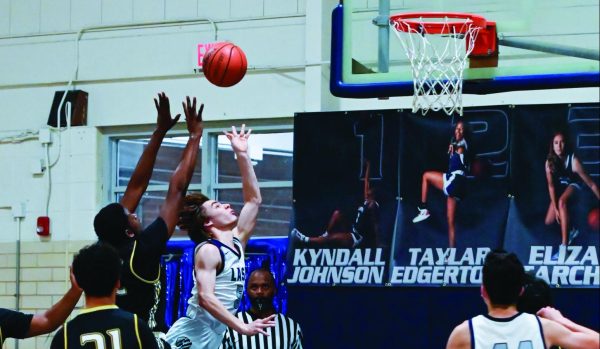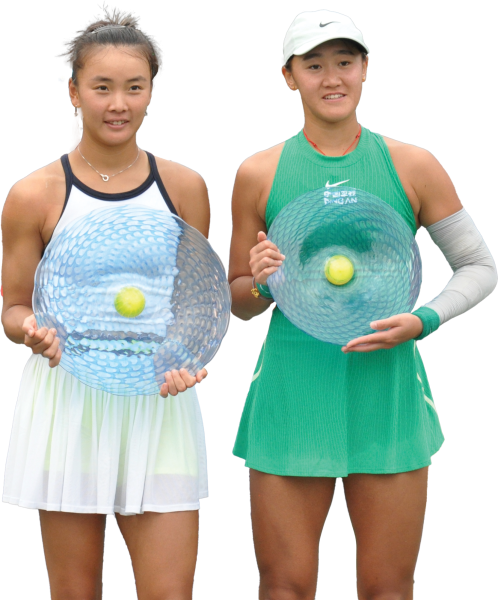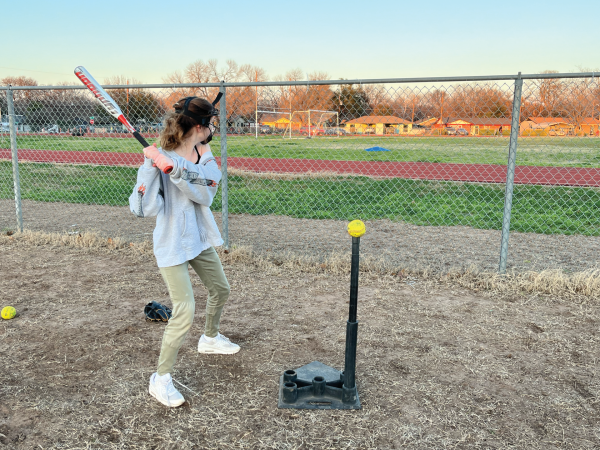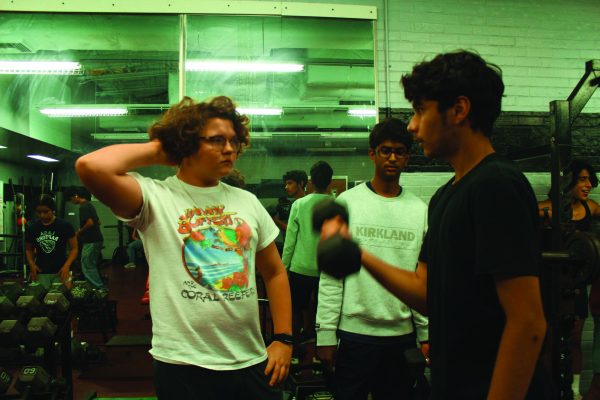Madness in NCAA Tournaments: A Look at Gender Inequality in March Madness
May 28, 2021
Gender inequality has historically been a problem within sports, from women not being able to compete in the Olympics until 1900 to an ongoing pay gap between men and women in professional sports. This year, during the National Collegiate Athletics Association’s (NCAA) annual March Madness tournament, attention was drawn to the inequality between men’s and women’s facilities and treatment in athletic competitions. In the 2021 NCAA basketball tournaments that took place in March, athletes in the women’s tournament had to deal with smaller amenities than the men did, which raised outrage among fans and athletes on Twitter, where it was mainly reported. Women’s and men’s NCAA basketball tournaments are held annually in March, and traditionally, games would be played throughout the country. This year, the men’s tournament took place in Indiana while the women’s tournament took place in cities across Texas, including San Antonio, Austin and Houston.
A lot of the inequalities seen happened behind the scenes, so many fans found out about it when female athletes posted about it on social media. Senior boys basketball player Hobbs McAllister learned about the disparity between the men’s and women’s accommodations online.
“The NCAA gave way more funding to the men’s basketball tournament than the women’s,” McAllister said. “The men got better rooms, better accommodations and a far superior training facility. The women’s teams didn’t receive any of that and were outraged, as many people were, when they learned that they were being given far less funding and care than the men’s teams.”
Because of COVID-19 restrictions, athletes were also expected to stay within the NCAA Tournament bubble. They also regularly underwent COVID-19 testing, which, according to LASA girls basketball coach Holly Tarter, was another thing that was not distributed evenly among athletes in the two tournaments, along with weight room conditions.
“When we went to the weight room, from what I saw, all [the women] had were little stretchy bands, and they had a couple of dumbbells,” Tarter said. “If you’ve ever been in a weight room at an NCAA school, you know that you have weight racks, you have a bench, you have a squat, you have a lot of cardio equipment. That’s what really showed the difference. And then I’m sure that the next step was whatever discrepancies they had in the COVID testing. If they weren’t receiving COVID tests every day, if it was every other day. So I’m sure the NCAA men’s, they were given COVID tests daily.”
In addition to weight room and COVID-19 testing discrepancies, there were also differences in the meals provided to athletes and the goodies they got in the standard “swag bags” athletes got, which ranged from towels to branded sports clothing. According to McAllister, a lower quality of provided accommodations could affect athlete performance.
“I think being given worse facilities, especially worse meal plans and training equipment, could cause a real problem when it comes to playing,” McAllister said. “I know from personal experience that performing on the court is a lot easier with good food and access to weights and practice gyms. Without that, people can’t be expected to play at 100%.”
According to Tarter, athletes’ training routines can also be affected when accommodations are not the best. Coaches and female athletes alike spoke out about how their training schedules were interrupted by the lack of equipment provided.
“One or two days can make or break a routine, and one or two days can make or break how the athletes feel,” Tarter said. “Just to give you an example, when our kids go home for the weekend, and we come back on a Monday, and they may not have slept as much, or they may have eaten differently, it’s tough to get them going on a Monday.”
According to junior girls basketball player Adryanna Sanchez, gender inequality can also hurt players mentally. Sanchez said that being given unequal amenities can cause athletes to doubt their performance and their strength.
“I think it affects them by mentally putting them at a lower level, and from there, they are only able to give the best at a low point,” Sanchez said. “When women, and really any person, isn’t believed in, that can lower their performance because they don’t think they’re valuable enough. But of course, some players use that as fuel to be one of the best of the best and to prove others wrong.”
After the outrage, the NCAA quickly improved the quality of the accommodations provided to athletes by expanding the women’s weight room and providing them with the same quality of meals and handouts as the men. According to Tarter, similar discrepancies between the budgets and quality of women’s and men’s sports accommodations have always been common, but they recently have been improving.
“I would say that one thing that has improved over my 30 years [in education and sports], it would be just the budget given to the sport,” Tarter said. “This is a good example for LASA because this year we started from ground zero, so we had to get everything from the uniforms to the workout stuff to the equipment. We were given pretty much equal budgets to start the foundation for LASA, which is everything.”
According to McAllister, increasing viewership for women’s sports is necessary to compare gender inequality in sports due to the increase in money that would be available for budgets. McAllister also said that gender inequality in sports starts at a young age.
“Don’t discourage girls from playing sports at such a young age,” McAllister said. “I’ve heard many stories of girls being told things like, ‘Switch to softball’ to tell them to stop playing a specific sport. Let people play what they want, and don’t try to force impressionable minds to do something that will be worse for them in the long run.”










